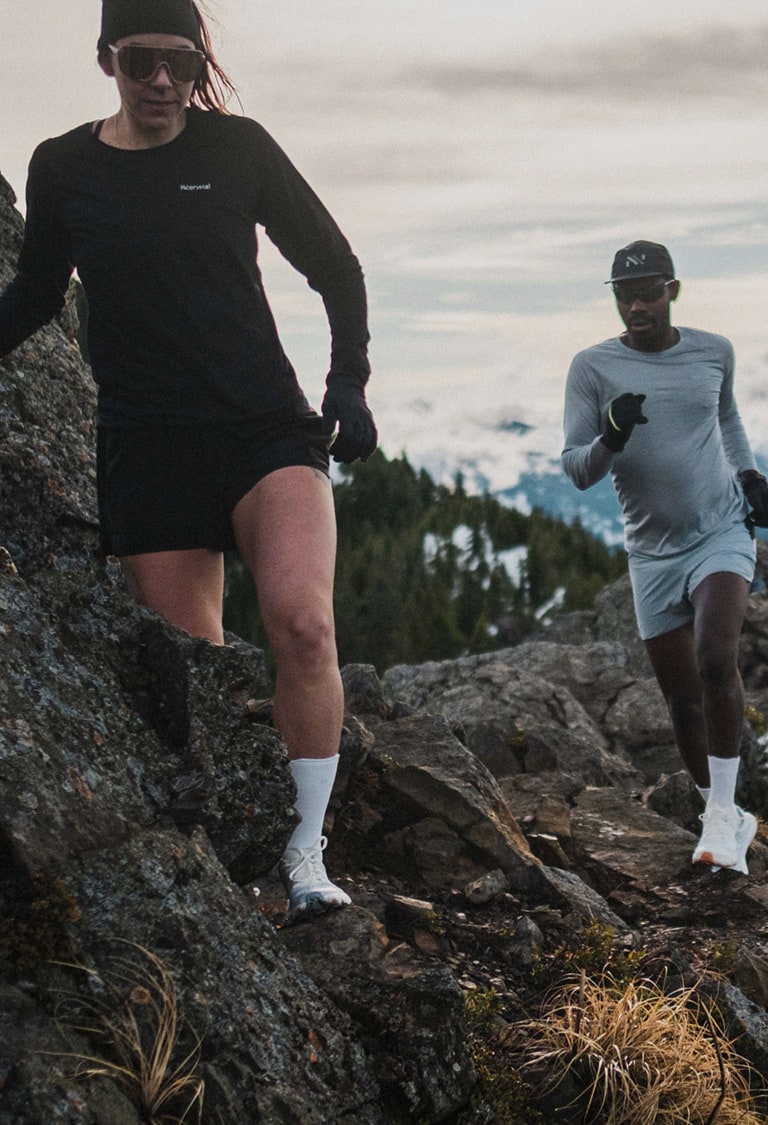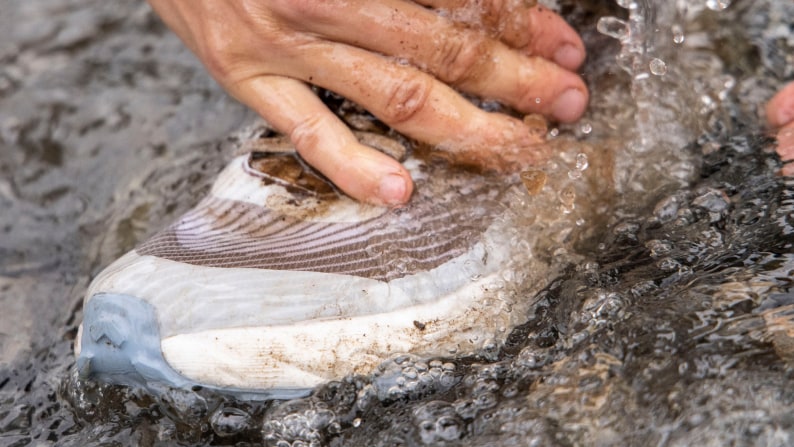
Trail Running Equipment Maintenance
Running is said to be a low-maintenance sport and one may not need fancy and expensive equipment.

But for regular runners, some equipment is a must-have for them to run more comfortably, safely and effectively. Some equipment necessary for running includes the right pair of shoes, hydration gear, running vests, shorts or jackets and a GPS watch. It is important to give your trail running equipment some attention and love for them to last longer.
Backpacks or Vests
- All the buckles should be closed.
- Ensure that all elastic tensioners are not loose if you have them.
- Rinse them with your hands to remove sweat traces, especially during hot weather, because salts worsen the material.
Sneakers
- You should try removing mud as soon as you finish running because it becomes hard to remove when it dries and can end up destroying the shoe textile.
- It is recommended that you soak the shoes in warm water if the mud is already dry.
- Avoid using scourers or hard brushes but instead use a water jet to give pressure, a soft brush or a magic sponge to wash it directly.
- Do not expose them to too much heat, for rubber parts can be distorted.
- Never use a washing machine to wash them.
Textile
- Avoid softeners but use neutral liquid detergents on them.
- Wash with water, not above 30⁰C.
- Do not soak the garment.
- Do not put them in the dryer; instead, hang them upside down in the shade.
- Never iron them.
- Follow the textile guidelines for membrane garments.

"For me, taking care of my running gear is an essential thing that I do on a regular basis, it allows the gear to last longer in the best possible condition and that is something I appreciate when I run"
Emelie Forsberg
How to Take Care of Your Trail Running Gear to Make it Last Longer
For your running shoes, they're definitely designed to get wet and muddy. As you run on muddy or roads with water, your shoes may end up wearing out. Below is a list of things to do to make them last longer;
- You should wash insoles separately in order to leave your shoes fresh and clean, even on the inside.
- Wash off mud using a hose since sand and mud can wear out shoe fabrics and materials.
- Use warm water and a soft brush to remove mud and clean hard-to-reach areas.
- Use a specific shoe cleaner for stubborn stains.
- Carefully check for any wear. If the studs and soles are so worn, it's time to think of changing the shoes.
- For shoes with waterproof treatment, it is good to renew the treatment if you notice some drops on the upper forming.
- To absorb moisture, you should stuff the shoes using a newspaper.
- Allow your shoes dry in a ventilated room at room temperature, away from direct heat sources.
How to Clean Water Bottles, Flasks and Bladders
If you have noticed that your water bottle has developed a funky odor or taste, it's time to wash it. Follow the below procedure;
- Measure a teaspoon of bleach and baking soda, put them in the bottle, and then fill it with water.
- Leave the bottle to sit overnight.
- Run the bottle through a dishwasher or rinse it fully.
- Allow it to dry in the air completely.
- For a water reservoir, rinse them thoroughly and allow them to air dry completely. Do not put them in a dishwasher.
How to Clean Your Running Shoes
Many people opt for washing their shoes in a washing machine, but that is not recommended. It might be a quick way of washing, but it's not the best method of washing shoes because they suffer hot temperatures that affect their structures and impact their upper. Hand wash is the best option to clean running shoes. The steps on how to hand wash the shoes are as follows;
- Stripping the slipper. Remove the shoe laces and the insoles. Wash them by hand and put them in the freezer if they have caught a smell.
- Wash the mud and all external dirt. If the mud is dry, you should use a stiff brush and if it still looks "fresh", use a hose.
- With water and a neutral soap, soak the shoes in a bucket.
- Clean all the parts. Rub with a bar of soap and use a soft bristle brush to wash the upper and delicate midsole areas.
- Dry the inside using kitchen paper.
- With still the paper inside, leave them to dry and remember not to expose them to direct sunlight.
How to Wash Gore-Tex Clothing and Renew the Waterproof (DWR)
When washing waterproof clothing with Gore-tex membrane type, be it ski pants or technical jackets, you should be cautious not to damage it. You should follow the below instructions to wash your Gore-tex type membrane;
Note that you should wash ski pants and jackets in a washing machine. To wash them;
- Empty all the pockets first.
- Close all zippers and snaps to avoid damaging the fabric.
- Don't turn clothes inside out for the protection of the membrane.
- Wash the clothes several times to avoid pilling them in the washing machine.
- Do not use a fabric softener but use the normal liquid detergent. Use the normal amount.
- Select synthetic clothes to wash cycle, which is a temperature of 30⁰C and a 600 rpm spin cycle.
- After the first cycle, activate again the rinse and spin program to ensure that all soap has been fully removed.
The outer fabric of all clothing, whether waterproof membrane or not, is always impregnated with a DWR, also called water-repellent treatment. The DWR prevents snow and water from penetrating the inside. The dryer reactivates the water-repellent treatment. So, after drying, you should put a towel on the outer garment layer and iron it at moderate temperature. A few passes will help distribute the heat evenly. This heat reactivates the water repellency and you will not need other products. However, you can find products revitalizing water repellency in spray or liquid detergent form.
How to Clean Workout Clothes
Workout clothes can stink due to the build-up of sweat and also body soils that are produced by the body. Therefore, they need to be carefully washed. To wash them;
- Turn the workout clothes inside out. This allows water and detergent to get access to the sources of smell, leaving your clothes cleaner.
- Wash your clothes as soon as possible.
- Use a sports detergent or a laundry booster. Add a quarter or half (depending on the load of clothes) of baking soda or vinegar to your wash to eliminate odor.
- Wash like fabrics together.
- Avoid using fabric softener.
- Do not expose the clothes to direct heat.
How to Clean & Repair Your Backpack
Your adventure backpack should be of the best quality. This is because it has to withstand all challenges in your journey, such as dirt, sweat and food scraps. There is no way you can prevent it from getting all these! It also has to serve its purpose as many times as possible. That is why you need to know how to take care of your backpack, from cleaning to repairing it. To clean the backpack, you should do the following;
- After your trip, air out the backpack. You should do this by first emptying it. After that, clean it gently and air it out by opening all zippers and pockets and leaving it to dry. Ensure that you do not expose it to direct sunlight, for it could get damaged by ultraviolet rays. If exposed for a long time, the ultraviolet rays might end up fading the colors of the backpack.
- Wash the backpack with soap and water with your hands. If the backpack is stained or has a lot of mud, you should soak it for around 30 minutes with warm water and detergent, then wash it with soap using your bare hands. Using a soft brush, scrub gently on the stains. You should ensure that you clean the backpack's shoulder straps, lumbar belt and back since they are the parts that directly come into contact with your body, hence getting soaked with sweat. To restore the membrane fabric's original properties, you're recommended to use high-quality products designed specifically for high-performance fabrics.
- Allow it to dry where it's not exposed to direct ultraviolet rays.
In case your backpack is destroyed, it is easy to mend it using DIY method. All you need to have is a larger needle and a fishing wire because a standard thread might not work perfectly. Fixing a zipper also is easy. You just have to be careful in aligning the two sides.
How to Maintain Your Technological Equipment
The technological equipment primarily used during running is a GPS running watch. A GPS watch helps you track your trails. To maintain it, you should ensure that you clean its charging contacts, the watch face using the cloth used on sunglasses and the watch strap every time you finish your running.
Conclusion
Taking good care of your running gear is important. First, it helps the equipment be in good condition for a long time and generally have a longer lifespan. Maintenance includes washing carefully and thoroughly and changing worn-out parts.
Photography: Nick Danielson
Share with a friend